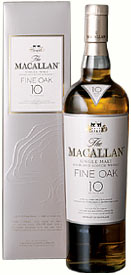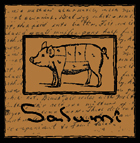...and not just because my brother moved there.
Banning foie gras? Really? Seems like an arbitrary line to draw. We do lots of horrendous things to animals in the name of food, ones that I consider even greater crimes.
For instance, in the interest of having a picture perfect turkey breast (and none of that scary dark meat that most Americans view as just a step above eating brains), we've bred the life out of the turkey to the point where most commercial turkeys are so screwed up they can't mate (they're artificially inseminated), their aortas rupture randomly, and they're so dumb they really do drown in the rain. We treat them, well, like animals to the point where farmers need to clip turkey beaks because they'll peck each other to death in their crowded conditions otherwise. But, because the Thanksgiving turkey is a sacrosanct part of American culture and broadly eaten, the Chicaco city council wouldn't dream of taking on that industry. If we're not careful, we may completely lose entire strains of "heritage" turkeys in the face of the mono culture of these horrible American White turkeys. More on this at Slow Food USA.
Even worse is the practice of shark finning. This where fishermen catch sharks, chop the valuable fin off, and then throw the still-living shark back in the water to drown. Although this practice makes economic sense to the fishermen, it's an incredible waste and incredibly cruel. What's more, it allows for a much broader massacre of sharks, which reproduce very slowly. The environmental carnage is incredible. Fortunately, this practice is now banned for American boats and in American waters. Disneyland Hong Kong also backed down in the face of public pressure and will not offer shark fin soup in the park.
Perhaps a greater crime against nature, though, are Smucker's Uncrustables. Frozen peanut butter and jelly sandwiches? Really? I'm shocked and appalled that anyone would consider making peanut butter and jelly sandwiches too hard or too much work. Instructions too complicated? Too time consuming? Ingredients too exotic, too hard to find, too expensive? WTF. (OK, this was a bit off tangent, but I've wanted to get that rant off my chest for a while.)
I'm certainly not against eating meat, but I would propose a few principles:
- Use the whole animal. Waste is disrespectful to nature and the animal and just stupid on our part.
- Eat only what the ecosystem can sustain. It's incredibly short-sighted to eat species into exinction. (For instance, check out the FishWise list to see what kinds of fish are harvested from sustainable fisheries.)
- Eat real food, not genetic freaks. Specifically, eat naturally produced genetic strains of meat and vegetables. They taste better, can be more nutritious, and are generally better suited for their local environments. This action may also slow the loss of genetic diversity in our food supply.
- Eat organically produced meat and veggies. The chemicals in the food are certainly not good for us and is very likely bad, plus the food is generally less nutritious. Furthermore, the Earth doesn't need more of our chemicals running off into streams or poisoning animals.
I hate grandstanding and arbitrary bans like the one being considered in Chicago. If you want to change the world, have a set of principles and then go apply them consistently. Anything else is random and ultimately ineffective.
 I've been meaning to write about the
I've been meaning to write about the  Oh my. Must try this.
Oh my. Must try this. I just opened a bottle of
I just opened a bottle of 